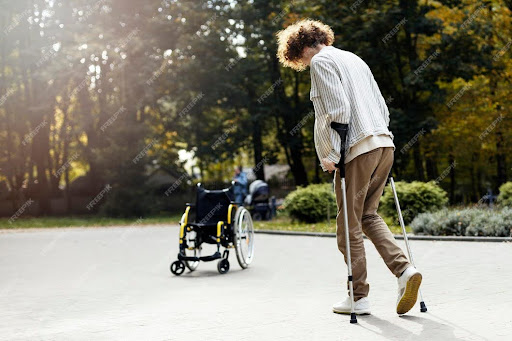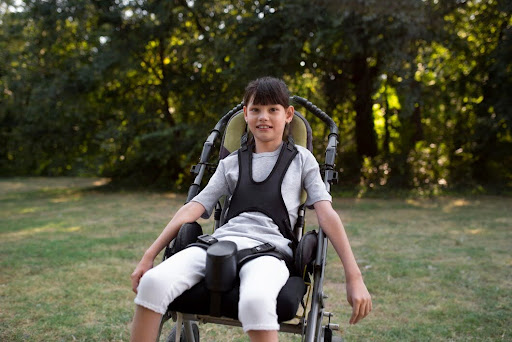Definition
Cerebral palsy is a disorder of movement and posture that results from a nonprogressive lesion or injury of the immature brain. The definition includes a heterogeneous spectrum of clinical syndromes characterized by alteration in muscle tone, deep tendon reflexes, primitive reflexes, and postural reactions. A lesion to the brain occurs in utero, near the time of delivery, or within the first 3 years of life.
Cases of Cerebral Palsy
Risk factors associated with Cerebral Palsy
Prenatal risk factors
- Socioeconomic factors
- Congenital malformations
- Hypoxic-Ischemic injury
- Placental complications
- Maternal Causes: seizure, hyperthyroidism, mental retardation, drug use
- Maternal intrauterine infections: TORCH (Toxoplasmosis, Rubella, CMV, Herpes)
- Toxic or teratogenic agents
Perinatal risk factors
- Multiple birth
- Low birth weight <2500 gms, especially if born with a body weight of <1500 gms
- Complications of prematurity: births at <37 weeks’ gestation, especially at <32 weeks’ gestation
- Intracranial hemorrhage
- Hyperbilirubinemia
- Growth retardation
- Seizures
- Trauma during childbirth
Postnatal risk factors
- Infections (meningitis /encephalitis)
- Trauma
- Intracranial hemorrhage
- Coagulopathies
- Anoxia caused by toxication, suffocation
In more than 50% of cases, the injury occurs from the 24th week of pregnancy. Studies show that the risk of CP is high in children with very low birth weight. Alcohol consumption during pregnancy increases the risk by 3 times, but other possible factors are smoking and sexually transmitted infections.
Signs and Symptoms of CP
There are a number of clinical signs that need to be considered.
Early signs in the neonatal period
- Child is passive
- Difficulties with sucking and swallowing
- Apnea
- Muscular hypotonicity
- Muscular hypertonicity is rare
- Changeable body temperature
- Seizures
Early signs of CP during infancy
- Delay of motor development
- Abnormal muscle tone / postural deviation
- Persistent primitive reflexes
- Hand preference during the first year
- Behavioral problems (irritability, crying)
Motor delay tends to increase with successive milestones. As a result, these children are not able to talk, eat or walk as much as their peers. They have difficulty maintaining balance, walking, writing, and precisely controlling hand movements. CP can range from mild to severe, depending on the extent of the brain injury and the location of the injury.
Associated Problems in Cerebral Palsy
- Delay in mental development (about 50% of cases, most common in rigid and severely spastic quadriplegia)
- Neuropsychological problems (behavior, sleep)
- Seizures (25-40% of cases, most frequent in hemiplegia and spastic quadriplegia)
- Visual problems (strabismus, refractory errors, hemianopsia in hemiplegia)
- Hearing impairment (infection/TORCH/, medications, bilirubin, encephalopathy)
- Speech and language impairment (40-50% of cases)
- Communication problems
- Nutrition/oromotor (difficulty sucking, swallowing, and chewing; poor lip closure, tongue thrust, drooling)
- Growth retardation
- Pulmonary (deficient ventilation, bronchopulmonary dysplasia in premature infants; microaspiration with oromotor dysfunction)
- Orthopedic problems (hip dysplasia, subluxation, arthritis, deformity of the feet, scoliosis, etc.).
Diagnosis
The diagnosis of cerebral palsy has historically rested on the person’s history and physical examination. A general movement assessment, which involves measuring movements that occur spontaneously among those less than four months of age, appears most accurate. Abnormal muscle tone, delayed motor development, and persistence of primitive reflexes are the main early symptoms of CP
Classification of Cerebral Palsy
Cerebral palsy is described based on the parts of the body it affects and the way it affects movement.
By Brain Injury Location: types of movement problems:
- Spastic CP (70% of cases) — the most common type of cerebral palsy is known as spastic cerebral palsy. It is caused by damage to the brain’s motor cortex and features stiff and tight, exaggerated movements.
- Dyskinetic /Athetoid CP (10%) — this type is caused by injury to the brain’s basal ganglia (which controls balance and coordination). Children with this type of cerebral palsy experience difficulty holding themselves up and often exhibit involuntary movements.
- Ataxic CP (10%) — ataxic cerebral palsy is characterized by a lack of coordination, balance, and sense of positioning in space caused by damage to the cerebellum.
- Mixed CP (10%) — some cases of cerebral palsy can be mixed, which means that someone’s brain is injured in more than one location, and they exhibit symptoms of several different types.
By Body Part: location of movement problems:
- Monoplegia – this type affects only one limb.
- Diplegia (sometimes called paraplegia) – this type affects both legs. A person’s arms may be affected to a lesser extent.
- Hemiplegia – this type affects one side of the body. People can either have right-side hemiplegia (affecting their right arm and leg) or left-side hemiplegia (affecting their left arm and leg). Approximately 40% of people with cerebral palsy have hemiplegia.
- Triplegia – this type affects three limbs — one arm and both legs. A person’s torso, facial, and oral muscles may be affected, too.
- Quadriplegia – this type affects all four limbs — both arms and both legs. A person’s torso, facial, and oral muscles are often affected, too. This type affects all four limbs — both arms and both legs.
The Functional Classification Systems for Children with Cerebral Palsy
Gross Motor Function Classification System (GMFCS 5 level)
Level I: Walks without limitations.
Level II: Walks with limitations.
Level III: Walks using a hand-held mobility device.
Level IV: Self-mobility with limitations may use powered mobility.
Level V: Transported in a manual wheelchair.
Manual Ability Classification System
Level I: Handles objects easily and successfully.
Level II: Handles most objects but with somewhat reduced quality and/or speed of achievement.
Level III: Handles objects with difficulty and needs help to prepare and/or modify activities.
Level IV: Handles a limited selection of easily managed objects in adapted situations.
Level V: Does not handle objects and has a severely limited ability to perform even simple actions.
Communication Function Classification System (CFCS)
Level I: Effective Sender and Receiver with unfamiliar and familiar partners.
Level II: Effective but slower-paced Sender and/or Receiver with unfamiliar and/or familiar partners.
Level III: Effective Sender and Receiver with familiar partners.
Level IV: Inconsistent Sender and/or Receiver with familiar partners
Level V: Seldom Effective Sender and Receiver even with familiar partners.
Eating and Drinking Ability Classification System (EDACS)
Level I: Eats and drinks safely and efficiently.
Level II: Eats and drinks safely but with some limitations to efficiency.
Level III: Eats and drinks with some limitations to safety; there may be limitations to efficiency.
Level IV: Eats and drinks with significant limitations to safety.
Level V: Unable to eat or drink safely – tube feeding may be considered to provide nutrition
Treatment
There is no cure for cerebral palsy. However, there are many treatment options that may help improve your child’s daily functioning. Selecting care will depend on his or her specific symptoms and needs, and needs may change over time. Early intervention can improve outcomes.
Treatment options can include medications, therapies, surgical procedures, and other treatments as needed.
Who treats Cerebral Palsy?
Children and adults with cerebral palsy may require lifelong care from a multidisciplinary medical team. In addition to a pediatrician or a physiatrist (a specialist in physical medicine and rehabilitation), and possibly a pediatric neurologist to oversee medical care, the team may also include an orthopedic surgeon, various therapists, and mental health specialists. These professionals focus on addressing the unique needs and challenges commonly associated with cerebral palsy. By collaborating with your primary care provider, the team can work together to develop a comprehensive and personalized treatment plan.
Medications
There is no cure for CP, but medications that can lessen muscle tightness might be used to improve functional abilities, treat pain, and manage complications related to spasticity or other cerebral palsy symptoms.
Muscle or nerve injections to treat tightening of a specific muscle, your doctor might recommend injections of onabotulinumtoxinA (Botox), or another agent, oral muscle relaxants, or medications to reduce drooling. Orthopedic surgery may be needed for some children to lessen muscle tightness or correct bone abnormalities caused by spasticity.
Can kids with mild cerebral palsy walk?
Over half (about 50%-60%) of children with CP can walk independently but it depends on severity. The severity of cerebral palsy is frequently measured through the Gross Motor Function Classification System (GMFCS). Generally, children with GMFCS levels 1 and 2 are able to walk independently. In contrast, children with GMFCS levels 3 and 4 are more limited in their walking ability and need to use mobility aids to walk short distances. Individuals with GMFCS level 5 have very severe motor impairments and rely on wheelchairs with caregiver assistance for mobility.
Can kids with Cerebral Palsy attend school?
Yes, all children should be educated and attend public school. Proper education ensures the independence of children with CP as much as possible in later life, and reduces the limitations caused by impairment.
Can kids with Cerebral Palsy live independently?
Not all children with cerebral palsy will have the ability to live on their own or earn money on their own. Sometimes cognitive and/or emotional issues limit people with cerebral palsy from becoming independent and finding gainful employment. Another important factor is the clinical types of CP. Most hemiplegic children can live independently, while quadriplegic children cannot.
We must remember that the primary goal is to help the child to have a fulfill life, including maximizing independence, and enhancing social and peer interactions, and learning potential.
Hope this helps!
Sincerely,
Gayane Zakaryan
Head of Rehabilitation Services
«ArBeS»



